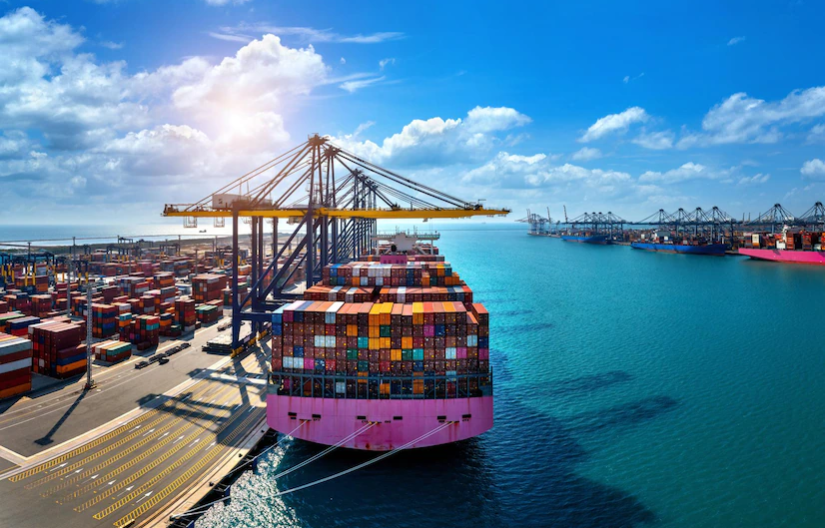The global supply chain has been faced with disruptions in recent years, such as logistics disruption, production relay, and excessive reliance on a transport and logistics provider. The revenue losses generated by COVID-19 are a clear example of how disruptions in supply chains result in negative effects. According to Reuters, the interruptions in the global supply chain that COVID-19 triggered resulted in a loss of revenue of 4 trillion dollars. This article will shed light on how the right logistic management services can help mitigate the supply chain disruption risks associated with natural disasters and man-made events.
What Results in the Global Supply Chain Crisis
Over the last several years, the complexity of supply chains has continued to grow. As a result, supply chains are more susceptible to a wide range of interruptions due to their operations’ scale, design, and global nature.
- Growing E-commerce Boosts the Demand for the Supply Chain
Retail e-commerce sales, reaching approximately 5.2 trillion dollars worldwide in 2021, is projected to grow to 5.2 trillion dollars by the end of this year. With booming e-commerce, there is a growing demand for the supply chain, which calls for more professional logistics management services.
- Pandemic Has Slowed down the Operations of the Global Supply Chain
However, the pandemic has made it difficult for businesses and customers to continue their normal activities, resulting in layoffs, an unexpected number of resignations, and a reduction in productivity and transportation activities. Most companies that rely on third-party logistics are faced with downturns due to the unavailability of workers and containers. Because of this, there was a massive gap between supply and demand in the labor market. As a direct consequence, the labor market is very competitive, which has added an additional load to the supply chain that affects all logistics management services.
As a result of these occurrences, manufacturers are facing persistent difficulties with regard to their supply chains. Increasing orders placed through e-commerce, unanticipated natural catastrophes, the COVID-19 virus, political unrest, and fierce rivalry for low-cost labor, warehousing, and supplies are among the challenges businesses are now facing. These disruptions are prompting firms to consider redesigning their supply chains and turning to logistics management services.
How to Adjust the Global Supply Chain to Avoid Future Disruptions
Because of the recent crises in the global supply chain, there is a greater need for reliable logistics management services. In addition to the issues caused by the pandemic, it is probable that continuing concerns will include evaluating where production takes place and how supply chains are organized. It is expected that businesses will strive to restructure their supply chains in order to make them more robust to achieve operational excellence. One way to get through the crisis is through on-shoring or re-shoring and near-shoring.
.png)
- On-Shoring&Re-Shoring
The terms “re-shoring” and “on-shoring” refer to the process of reintroducing previously imported products or materials into domestic production. They don’t rely on overseas trade or transportation for the acquisition of essential resources for production, bringing many benefits, such as lower operational costs, easy access to domestic companies, etc.
- Near-Shoring
Another option that may help in shortening the supply chain and mitigating the supply chain disruption risks is near-shoring, which refers to the relocation of production or selecting suppliers from closer proximity to the destination country. It boasts many advantages, including lower transportation costs, face-to-face communication with neighboring partners, reduced misunderstandings with cultural compatibility, etc.
Re-shoring/on-shoring and near-shoring will reduce the risk of disruptions. However, it remains a question. Will it be able to provide the level of specialization and economies of scale it is in the case of offshoring? However, all these issues and risks can be mitigated through the selection of the right logistics management services. The benefits of logistics management include higher visibility into your supply chain to reduce the supply chain risks, reduced overhead costs by streamlining the operations, increased customer service through efficient last-mile delivery services, and reduced supply chain disruption through an efficient and reliable global network of transportation and logistics.

Conclusion
Danspeed Global provides one-stop international logistics management services with our vast network of reliable transportation that covers all modes, including air freight and sea freight all over the world. Our effective logistics management services have helped our international clients to recover from the supply chain crisis even during the unprecedented times of COVID-19. We offer sea freight from China to Canada, the US, and other countries through our reliable partnership with shipping lines, vessel chartering, and cargo tracking. Our effective logistics management services offer a wide range of effective strategies to provide you a complete, hassle-free, customized one-stop services from booking to delivery and beyond.



